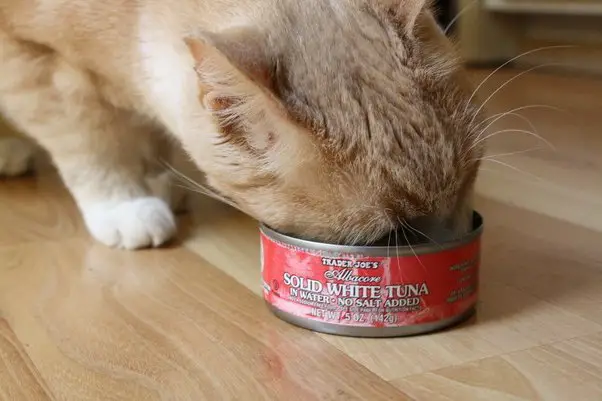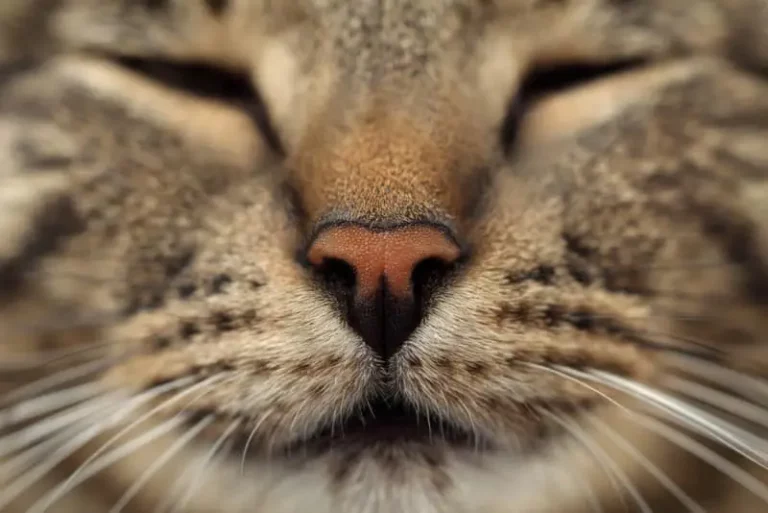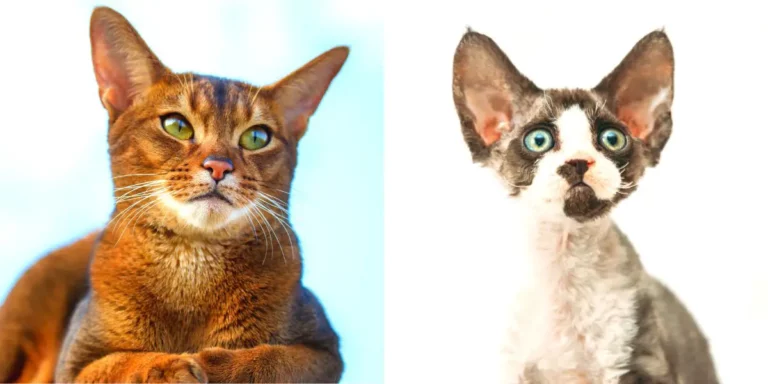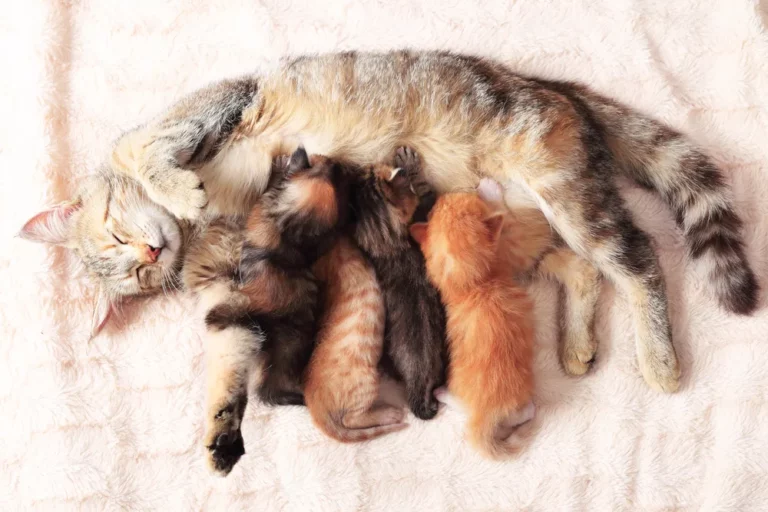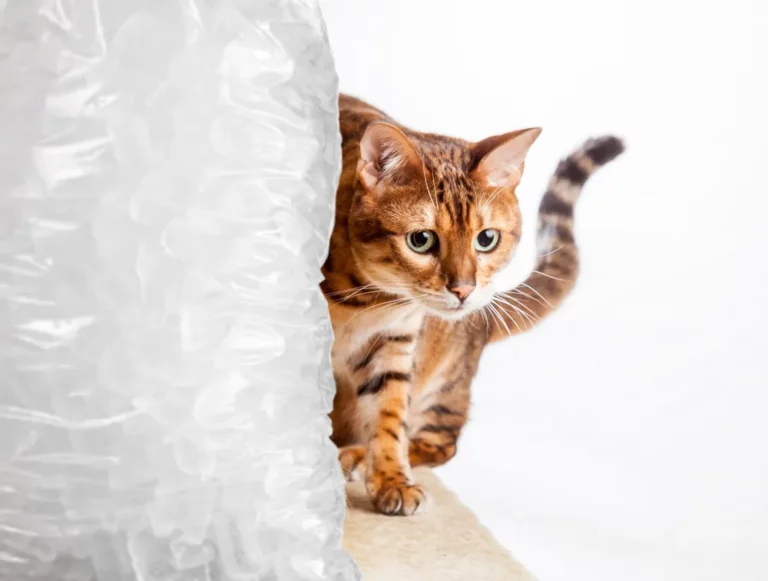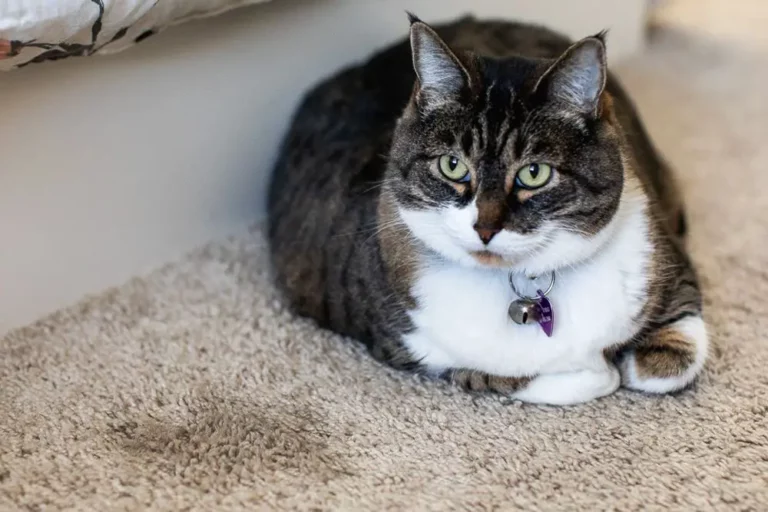Why Cats Wag Their Tails When Petted (5 Possible Reasons)
Greetings, cat lovers! One of the most fascinating aspects of our feline friends is their complex body language, and tail wagging is a prime example of this. Unlike dogs, when cats wag their tails, it’s not always about sheer joy or excitement.
So, you may be wondering, “Why does my cat wag his tail when I pet him?” The answer can be an interesting exploration into the world of cat behavior.
In this blog post, we’ll delve deep into the secret language of cats’ tails and decode what it might mean when your cat wags his tail as you shower him with affection.
So, let’s get started!
Key takeaways
Cats use tail wagging to communicate.
Tail wagging while petting may signal contentment, annoyance, or attention-seeking.
Mood, environment, and individual traits impact tail wagging.
Body language and context are vital for interpreting tail wagging.
Sudden or excessive tail wagging may require a vet’s attention.
Why Does My Cat Wag His Tail When I Pet Him?
1) Expressing Contentment
When you’re petting your cat, you might notice a gentle wag or twitch at the end of their tail. This can often be a sign of pleasure or contentment. Some cats use a slow wag or “tail flick” to show that they’re in a good mood and enjoying your affection.
2) Sign of Annoyance or Overstimulation
On the other hand, a more vigorous wag, especially involving the whole tail, can be a sign your cat is becoming overstimulated or annoyed. Cats have different tolerance levels for petting, and it’s possible for them to go from enjoying your strokes to wanting them to stop.
The tail wag, in this case, is a polite way of saying, “That’s enough for now.”
3) Seeking Attention
Sometimes, your cat might wag his tail to get your attention. If you’re petting them and they want something more – perhaps a favorite toy or a treat – a distinctive tail wag can be their way of making their desires known. This is usually coupled with other signals like meowing or pawing.
4) Mood and Environment
Just like humans, cats can have mood swings too, and this can reflect in their tail movements. For instance, if your cat is in a playful mood, they might wag their tail more vigorously when you’re petting them.
Similarly, environmental factors such as the presence of other animals, unfamiliar people, or a change in surroundings can also influence your cat’s tail movements.
5) Individual Differences
Each cat is unique, and so is their way of communicating. Some cats might wag their tails more frequently than others, regardless of being petted or not. Others might reserve tail wagging for specific situations. Understanding your cat’s individual quirks and habits can help you interpret their tail language more accurately.
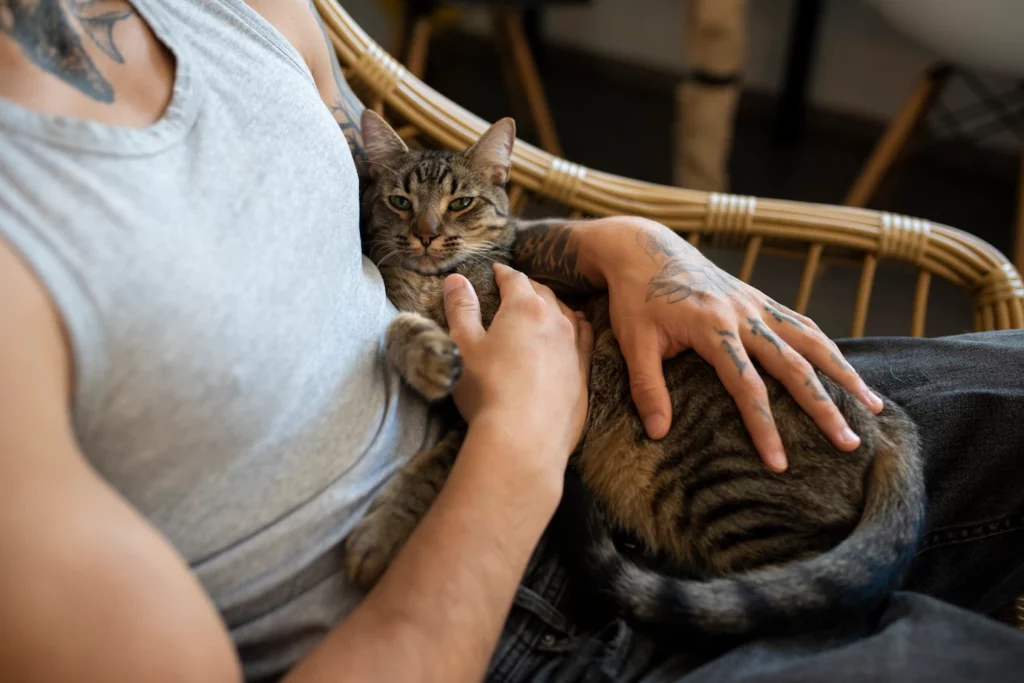
Understanding Cat Tail Language
Cat Tail Movements and Emotions
Cats communicate a great deal through their body language, and their tails are like expressive flags that signal their mood. Each movement, from a gentle twitch to a full-on swish, carries meaning.
A high, quivering tail often signals excitement or happiness, a low or tucked tail can indicate fear or anxiety, and a puffed-up tail is usually a sign of threat or agitation.
The Role of Tail Wagging in Cat Communication
Tail wagging, or swishing, is a particularly expressive aspect of feline communication. It’s not a simple action but can have a variety of interpretations based on the context, the cat’s overall body language, and individual personality.
It’s important to note that tail wagging in cats differs significantly from dogs and may carry a completely different message. Understanding what your cat is trying to communicate through tail wagging can go a long way in strengthening your bond with them and ensuring their well-being.
Tips for Interpreting Your Cat’s Tail Wagging
Tail wagging is just one piece of the puzzle when it comes to understanding your cat’s behavior. Here are a few tips to help you make sense of what your cat is trying to communicate:
Consider the Whole Picture: Along with the tail, observe your cat’s other body signals too. For example, are their ears flat? Are they purring or hissing? A combination of these signs can give you a clearer idea of what your cat is feeling.
Context is Key: The situation or environment can greatly influence your cat’s tail wagging. Tail wagging during a petting session might mean something different than tail wagging when a new guest arrives at your house.
Learn Your Cat’s Habits: Just like people, every cat has its own unique personality and behavior patterns. What one cat might express through tail wagging, another might express through a different action. Understanding your cat’s individual habits can help you understand their tail language better.
Be Patient and Observant: Understanding your cat’s tail language can take time. Be patient and keep observing. Over time, you’ll likely start recognizing patterns and understanding your feline friend better.
Frequently Asked Questions
Can tail wagging be a sign of a medical issue in cats?
Answer: While tail wagging is usually a form of communication, sudden changes in your cat’s tail movements can indicate a health problem. For instance, if your cat is wagging his tail excessively, has difficulty moving it, or shows signs of discomfort, it’s a good idea to consult with your vet.
Are certain breeds more likely to wag their tails?
Answer: Tail wagging is a universal feline behavior and is not specific to any breed. However, some breeds may be more expressive with their tails due to their temperament. For example, active and playful breeds might show more tail movements compared to more laid-back breeds.
Does the speed of tail wagging matter in interpreting what it means?
Answer: Yes, the speed of tail wagging can provide insight into a cat’s emotional state. A slow, relaxed wag often indicates contentment, while a fast, twitchy wag can suggest agitation or overstimulation. However, it’s crucial to consider other body signals and the context to accurately interpret your cat’s tail wagging.
Final Thoughts
Decoding cat tail language is an exciting journey into understanding your feline friend’s emotions and needs. When your cat wags his tail while you’re petting him, it could be a sign of contentment, an indication of annoyance or overstimulation, or a call for attention.
But remember, every cat is unique. By observing your cat’s overall body language, considering the context, and recognizing your cat’s individual habits, you can gain a deeper understanding of what their tail wagging signifies.
In the end, the goal is to foster a strong bond and create a loving, comfortable environment for your beloved pet. Happy petting!
References
- Why Do Cats Wag Their Tails? – Purina
- Why Cats Wag Tails? – Prudent Pet
- Why Do Cats Wag Their Tails? – Comfort Zone
- Why Does My Cat Wag Its Tail When I Pet It? – Quora Discussion

